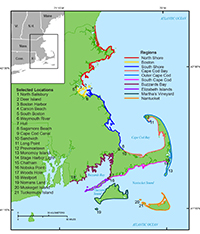
|
| Click on figures for larger images. |
 |
Figure 1. Index map of the Massachusetts coast showing the 10 geographic regions used to organize and publish the shoreline rate-of-change data in this report |
|